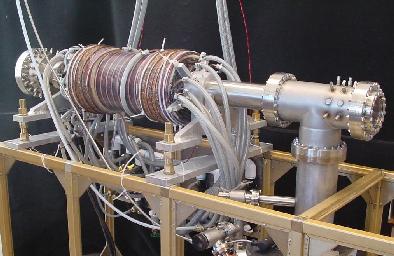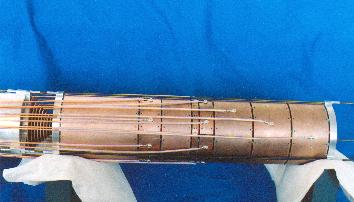

 |
 |
| The vacuum system and magnet for the ion trap | The confinement rings for the ion trap |
7Be is the lightest element that decays only through electron capture - there must be electrons present for it to decay. One would then assume that the rate of decay can be modified by changing the probability of finding an electron in close proximity to the nucleus. It has been found that the decay rate is changed by both chemical bonding and by application of very high pressures.
Interestingly, when the Long-Duration Exposure Facility (LDEF) satellite was retrieved by the Space Shuttle from low earth orbit after 6 years in space it was found that there was an unexpectedly high concentration of 7Be present.
One possibility that could increase the concentration of 7Be in the upper atmosphere would be ionization of the atom. Because the formation process is very energetic it would be expected to be formed in an ionized state. In the lower atmosphere it would rapidly neutralize because of the high density. But in the upper atmosphere it would be possible to remain ionized for a period. If the decay rate is modified by the ionization state it could result in an increased abundance.
We are currently working on a non-neutral trap designed to contain an ionized 7Be plasma for a sufficiently long period to get an accurate measurement of the decay rate in this state.